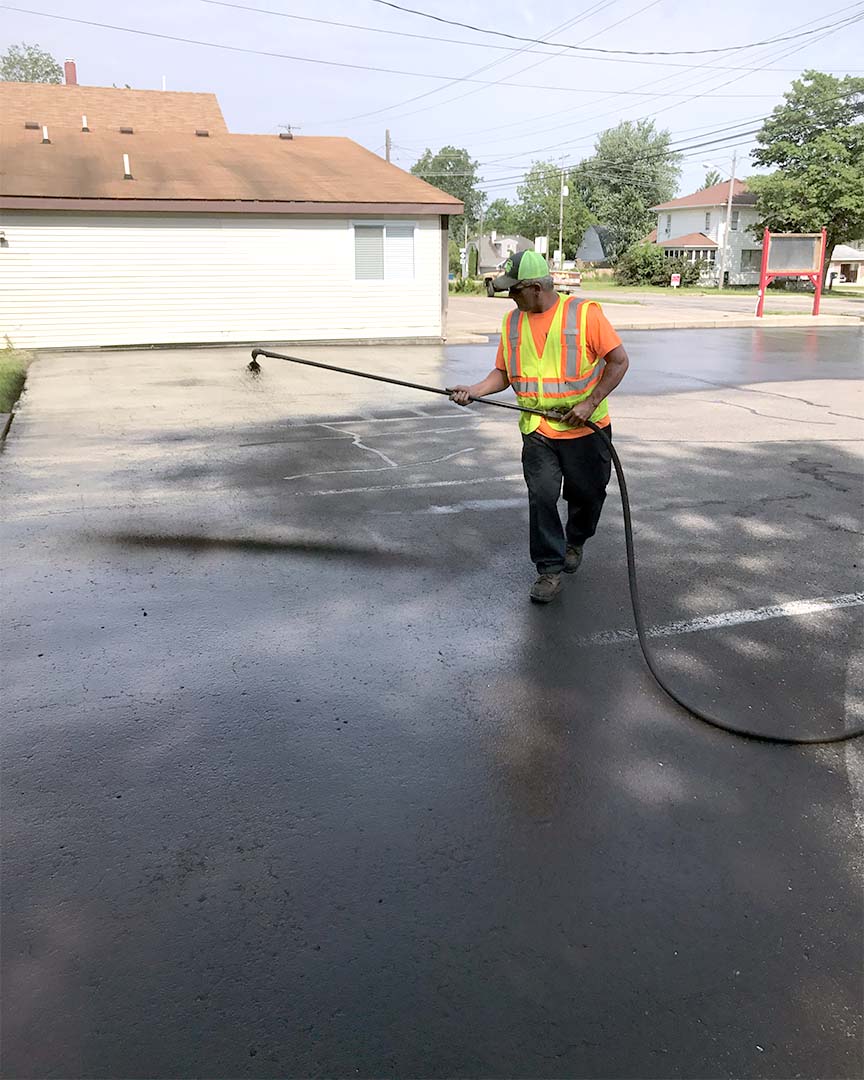Raise Pavement Performance: Cold Mix Asphalt Sealing Strategies
Raise Pavement Performance: Cold Mix Asphalt Sealing Strategies
Blog Article
Cold Mix Asphalt Vs. Hot Mix Asphalt: Which Is Right for You?

Structure Distinctions
Cold mix and warm mix asphalts vary significantly in their make-up, with unique characteristics that influence their performance and applications. Cold mix asphalt is created by emulsifying the asphalt binder with water and an emulsifying representative before mixing it with aggregate. This technique enables the asphalt to be workable at lower temperature levels, making it perfect for momentary repairs and for use in chillier weather. Warm mix asphalt, on the various other hand, is manufactured at high temperatures, typically in between 300-350 ° F, which aids to attain better compaction and a more long lasting end product. The warm mix asphalt manufacturing procedure entails warming the aggregate and asphalt binder independently prior to integrating them at the asphalt plant.
Additionally, cold mix asphalt tends to be less dense and more adaptable than warm mix asphalt. This adaptability makes it far better matched for areas with higher levels of movement, such as driveways or roadways with hefty web traffic. In comparison, hot mix asphalt is known for its high toughness and resistance to rutting and splitting, making it a recommended choice for highways and high-traffic roadways where durability is critical.
Installment Process Variations
The process of setting up cool mix and hot mix asphalt displays significant differences in their needs and procedures. In contrast, warm mix asphalt demands a more sophisticated installment procedure. Due to the heating demands, warm mix asphalt installments are generally lugged out by specialists with specialized devices, ensuring a more long-term and structurally audio outcome.
Resilience and Durability Aspects
When thinking about asphalt options, durability and long life are vital variables to review for long lasting pavement performance. Warm mix asphalt (HMA) is understood for its outstanding resilience and my review here durability.
In regards to durability, HMA generally outperforms CMA due to its superior toughness and resistance properties. HMA sidewalks have a longer service life, needing less regular repair services and maintenance, which can translate to set you back savings over time. Furthermore, HMA sidewalks are more conveniently adjustable to fulfill particular job demands, better improving their durability.
Expense Factors To Consider
Considering the monetary ramifications is a vital facet when evaluating the choice in between warm mix asphalt (HMA) and cool mix asphalt (CMA) for sidewalk jobs. While the preliminary cost of hot mix asphalt is normally higher than that of chilly mix asphalt, HMA commonly offers a much more cost-effective solution in the long run due to its exceptional toughness and durability.
In enhancement to material prices, it's important to take into consideration the costs linked with installation and upkeep when contrasting HMA and CMA. Eventually, the choice between HMA and CMA must take right into account not just the preliminary price however also the long-term financial effects to figure out the most cost-effective option for the details sidewalk job.
Environmental Influence Comparison
Comparison of the ecological influences between warm mix asphalt (HMA) and cool mix asphalt (CMA) discloses distinctive differences in sustainability methods. HMA production needs high temperatures, leading to enhanced power intake and greenhouse gas discharges.
Furthermore, the usage of CMA usually includes reusing existing asphalt pavement, promoting source preservation and decreasing the amount of waste sent to garbage dumps. By choosing for CMA over HMA, roadway building jobs can contribute positively to environmental preservation efforts.
Conclusion
To conclude, the option between chilly mix asphalt (CMA) and hot mix asphalt (HMA) relies on different aspects such as structure, installation procedure, longevity, durability, cost, and ecological influence. angle parking. While CMA offers a cost-efficient and quick solution for minor repairs, HMA makes certain remarkable sturdiness and long life for rush the original source hour areas. Take into consideration these variables very carefully to establish which kind of asphalt is the right choice for your paving needs

Thinking about the economic implications is a vital element when examining the option in between warm mix asphalt (HMA) and chilly mix asphalt (CMA) for pavement projects. While the initial expense of hot mix asphalt is generally higher than that of chilly mix asphalt, HMA frequently provides a much more affordable option in the lengthy run due to its exceptional sturdiness and longevity. asphalt patch repair.Comparison of the environmental effects between warm mix asphalt (HMA) and cool mix asphalt (CMA) exposes unique site web distinctions in sustainability practices.In verdict, the choice between cool mix asphalt (CMA) and hot mix asphalt (HMA) depends on different factors such as composition, setup process, sturdiness, durability, price, and ecological impact
Report this page